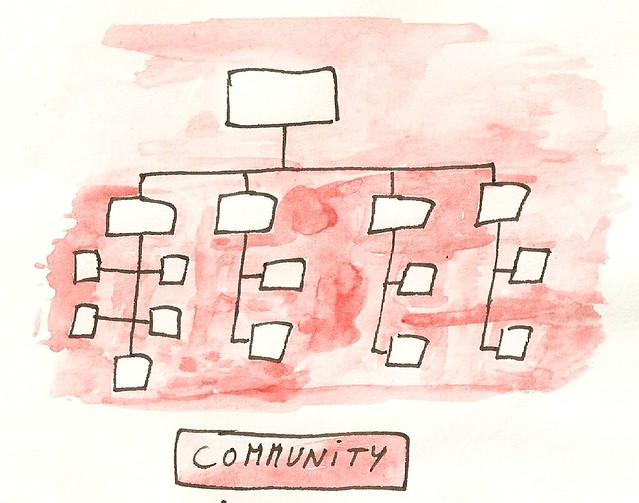The only way to guarantee sustainable change is by making sure there is a community developed around the future state. But first we need to let go of our need to fit in.
That embarrassing silence in the boardroom when you announce that your change initiative is being supported by a communication over a Yammer group. The painful laughter and disbelief you experience when you talk about an onboarding process or a local transition coach.
It’s all part of the game. As a change practitioner we should be aware of the fact that we represent a foreign element. To the same extent that our customers are wrestling with their own change, the same force field of opposition is inflicted upon us. When we are unaware of that, we don’t realize that the silence, laughter and disbelief with regards to the soft-stuff-initiatives is an expression of discomfort.
Unfortunately, instead of seeing it for what it is (an expression of discomfort) we lower the bar of our communication initiatives down to plain propaganda (newsletters, announcements, meetings, etc. all justified by a ‘communication plan’). We tell ourselves that it is better to play safe and fit in because there is no time for fancy soft stuff. Moreover, none of that soft stuff is measurable or even packageable into ‘deliverables’. So why bother, right? Wrong.
Here is the thing: any project that is on-time, on-budget or that has shiny deliverables coming out of our ears will not guarantee that the change from the current state to the future state has been accomplished. And even less of those project-characteristics will guarantee that the change will be sustained when the project is adjourned. None of them.
The only way we can guarantee that the future state will be taken care of when the project is adjourned is by developing a community around the project, i.e.: a social architecture. The thing that teaches people how to fish so they can eat forever. That’s where community development and soft-stuff initiatives come in.
Now don’t take this blog post as a light excuse to not focus on deliverables or deliver your project according to the specs. I NEVER SAID THAT. To the contrary, I challenge you to take it up a notch and to dive into the stuff that matters when you are no longer there to hold the hands of your customer: the soft stuff.
By the way, eventually there is a way to measure community development in terms of project benefits. The way to do so is by measuring the problem solving capacity of the community. An example of such a measurement is a qualitative analysis of the type of problems that make it to the helpdesk. Lots of small problems that can be solved with a simple explanation? That’s a sign of low maturity of your community. Im’ sure there are plenty of other ways to measure the maturity of a community in relationship to the project benefits.
Anyway, as I am writing this I realize that the benefits of community development are uncharted territory JUST BECAUSE we give in to the signs of discomfort, we play safe and try to fit in. Have a look at the part of the organization chart that I painted red. That’s it. THAT is the uncharted territory.



Pingback: Community Development is the New Change Management | Reply-MC | the Change Samurai | Scoop.it()
Pingback: Community Development is the New Change Management | Reply-MC | Business change | Scoop.it()
Pingback: Community Development is the New Change Management | Reply-MC « the Change Samurai()
Pingback: Why you should reframe your strategy as transformational @leadmedit @helenbevan @Medici_Manager @muirgray | Carlo Favaretti()